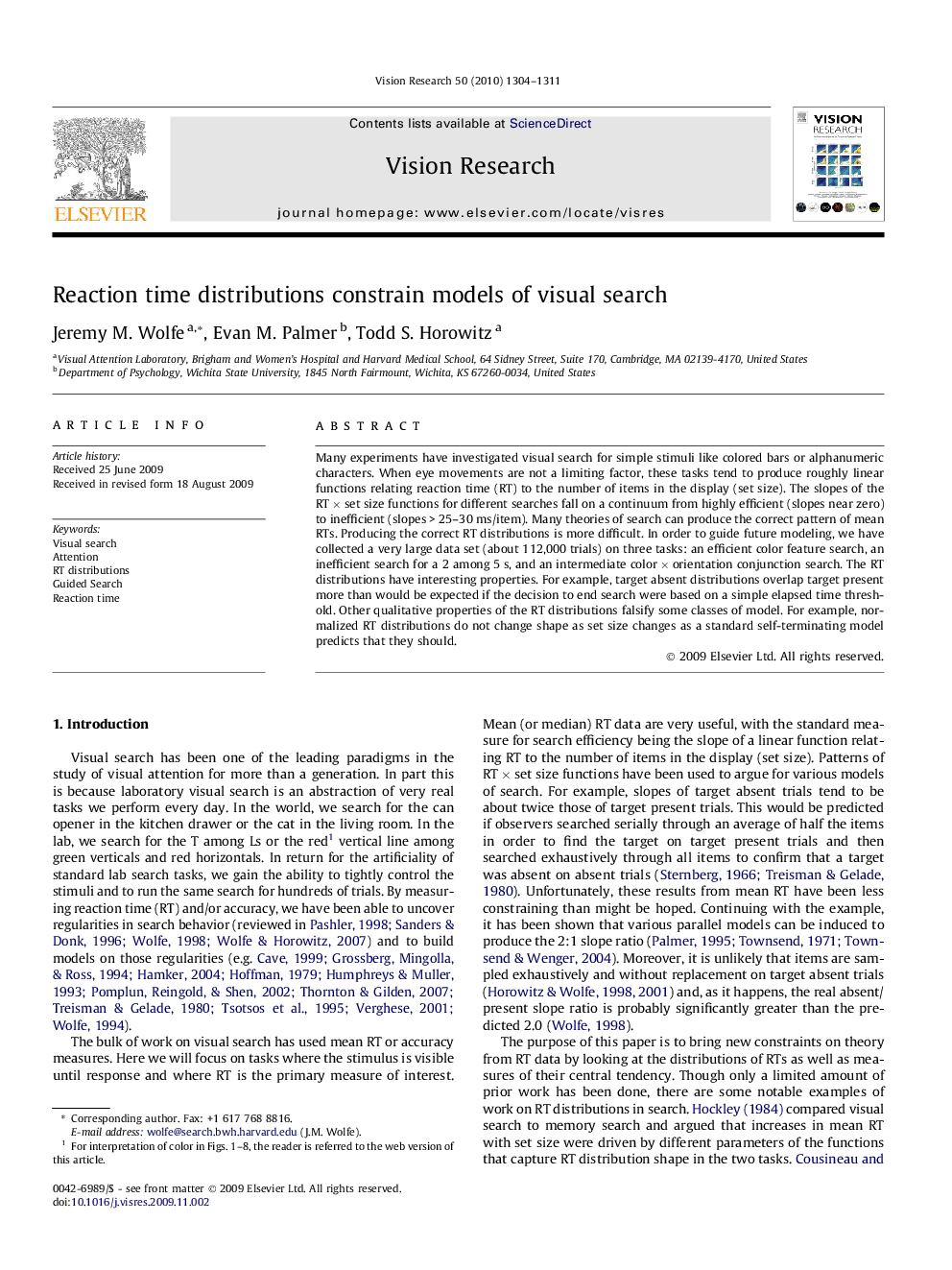| Article ID | Journal | Published Year | Pages | File Type |
|---|---|---|---|---|
| 4034464 | Vision Research | 2010 | 8 Pages |
Many experiments have investigated visual search for simple stimuli like colored bars or alphanumeric characters. When eye movements are not a limiting factor, these tasks tend to produce roughly linear functions relating reaction time (RT) to the number of items in the display (set size). The slopes of the RT × set size functions for different searches fall on a continuum from highly efficient (slopes near zero) to inefficient (slopes > 25–30 ms/item). Many theories of search can produce the correct pattern of mean RTs. Producing the correct RT distributions is more difficult. In order to guide future modeling, we have collected a very large data set (about 112,000 trials) on three tasks: an efficient color feature search, an inefficient search for a 2 among 5 s, and an intermediate color × orientation conjunction search. The RT distributions have interesting properties. For example, target absent distributions overlap target present more than would be expected if the decision to end search were based on a simple elapsed time threshold. Other qualitative properties of the RT distributions falsify some classes of model. For example, normalized RT distributions do not change shape as set size changes as a standard self-terminating model predicts that they should.
